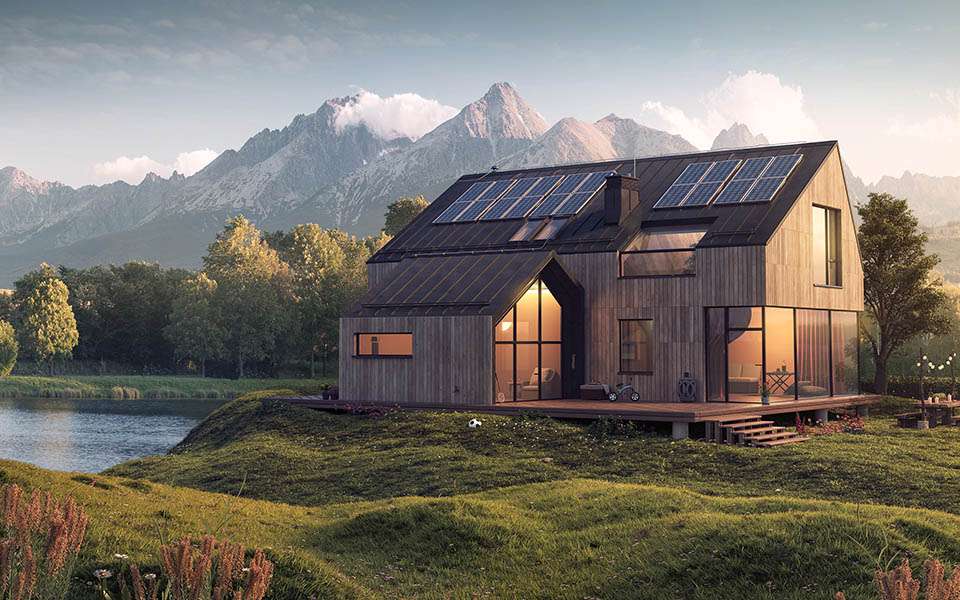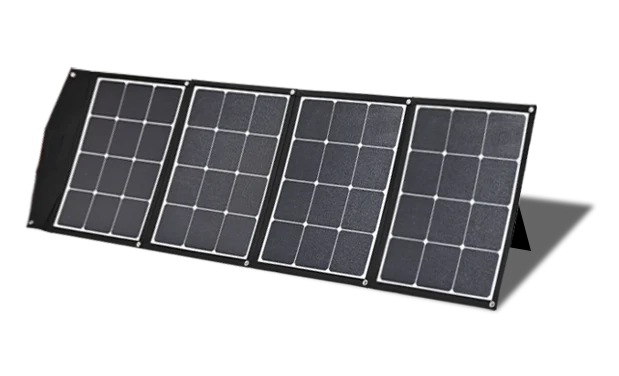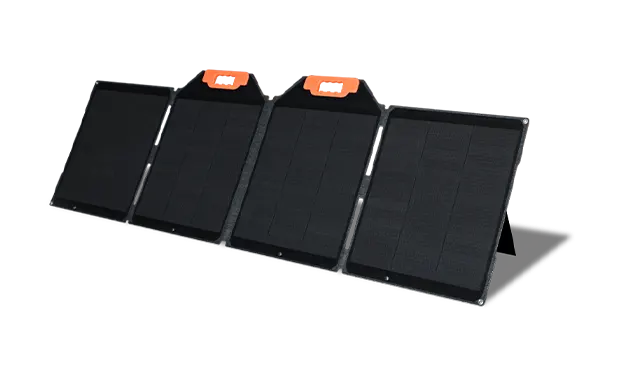With the increase of environmental awareness and the pursuit of energy autonomy, more and more people are choosing off-grid solar cabins as their living and vacation options. Such cabins not only reduce dependence on traditional power grids, but also provide clean, renewable energy, allowing you to enjoy the convenience of modern life in remote areas. Here is everything you need to know about off-grid solar cabin kits.

What is an off-grid solar cabin kit?
Off-grid solar cabin kits are a complete solution, including solar panels, batteries, inverters, charge controllers, and related installation accessories. They are designed to operate independently of the power grid and rely entirely on solar power to provide electricity for the cabin. These kits usually contain:
Solar panels: used to convert solar energy into electrical energy.
Batteries: store electricity generated during the day for use at night or on cloudy days.
Inverters: convert direct current (DC) into alternating current (AC) for use by household appliances.
Charge controllers: manage the charging and discharging of batteries to prevent overcharging and over-discharging.
Why choose an off-grid solar cabin kit?
Energy autonomy: no longer dependent on the public power grid, completely self-sufficient.
Environmental protection and energy saving: Use renewable energy to reduce carbon footprint.
Reduce costs: Although the initial investment is higher, you can save on electricity bills in the long run.
Emergency backup: In the event of natural disasters or power grid failure, you can still have a stable power supply.
Benefits of installing an off-grid solar cabin kit
Installing an off-grid solar cabin kit not only provides you with a stable power supply, but also brings many other significant benefits. Here are the main advantages of installing an off-grid solar cabin kit:
1. Energy autonomy
Off-grid solar systems allow you to produce and use electricity independently of the public power grid. This means that you can enjoy a continuous and reliable power supply even in remote areas or places where the power supply is unstable.
2. Environmental protection and energy saving
Using solar power generation is a clean, renewable form of energy that does not produce greenhouse gases or other pollutants. By reducing your dependence on fossil fuels, you can significantly reduce your carbon footprint and contribute to protecting the environment.
3. Reduce costs
Although the initial investment of an off-grid solar system is higher, in the long run, it can greatly reduce or even eliminate electricity bills. In addition, solar equipment has low maintenance costs and a long service life, which further reduces the long-term cost of use.
4. Emergency Backup
In the event of a natural disaster, extreme weather, or grid failure, an off-grid solar system can serve as a reliable backup power source to ensure your cabin is still up and running and provides the electricity you need for basic living.
Things to consider when choosing an off-grid solar solution for your cabin
Off-grid solar systems are ideal for those who want to live or vacation away from the grid. Not only do they provide a steady supply of electricity, but they also reduce reliance on traditional energy sources, thereby reducing their carbon footprint. When choosing an off-grid solar solution for your cabin, there are several key factors to consider to ensure the efficiency and reliability of the system.
1. Power Needs Assessment
Determine your power needs: First, you need to make a detailed list of all the devices and appliances that need to be powered and calculate their total power and usage time. Common appliances include lighting, refrigerators, microwaves, computers, and entertainment equipment. Based on this information, you can estimate your total daily power consumption.
Tip: Record the power (watts) and daily usage hours of each device, then calculate the total power demand (watt-hours). For example, if a 10-watt lamp is used for 5 hours per day, its daily consumption is 50 watt-hours.
2. Solar Panel Selection
Power and Efficiency: Choose solar panels with enough power to meet your power needs. Efficient solar panels can provide more power in a limited space.
Recommendation: Calculate the total solar panel power you need and choose the right size and number of panels based on the actual situation. For example, if you need 3,000 watt-hours per day and the solar panels generate an average of 5 hours of power per day, you will need 600 watts of panels (3,000 watt-hours/5 hours = 600 watts).
3. Battery Capacity
Capacity and Type: Choose a battery with enough capacity to ensure that power can be provided even on cloudy days or at night. Common battery types include lead-acid batteries and lithium batteries. Although lithium batteries are more expensive, they have a longer life and higher efficiency.
Recommendation: When choosing a battery, use 1.5 times the daily power consumption as a basis. For example, if you use 3,000 watt-hours of electricity per day, the battery capacity should be 4,500 watt-hours.
4. Inverter
Power Matching: The power of the inverter should be able to handle the total power demand of all connected devices. You also need to consider the peak power of the inverter to cope with momentary high loads.
Recommendation: Choose an inverter with a higher power rating than the total power of all devices. For example, if the total power is 2000 watts, choose a 3000 watt inverter to ensure stability and reliability.
5. Charge controller
Type: Choose an MPPT (maximum power point tracking) charge controller because they are more efficient than PWM (pulse width modulation) controllers and can better manage the output of solar panels.
Recommendation: Choose an MPPT charge controller of appropriate capacity based on the total power of the solar panels and the battery voltage. For example, if the total power of the panels is 600 watts and the battery voltage is 24 volts, you need a charge controller with a rated current of at least 25 amps (600 watts/24 volts = 25 amps).
6. System monitoring and maintenance
Monitoring system: Install a monitoring system to monitor the performance of the solar system in real time, including power generation, power consumption, and battery status. This helps to detect and solve problems in a timely manner and ensure that the system operates efficiently.
Recommendation: Choose a system with remote monitoring function so that you can always understand the status of the system and take action when necessary.
How to choose the right off-grid solar cabin kit?
Power demand: Calculate how much power your cabin needs. For example, lighting, electrical appliances, heating equipment, etc.
Battery capacity: Choose a battery with sufficient capacity to ensure power supply even on days without sunlight.
Inverter power: Make sure the inverter can handle your maximum load demand.
Installation environment: Consider the installation location, orientation, and angle of the solar panel to maximize the utilization of solar energy.
Sungold Solar Off-Grid Solar System Kit
Components: solar panels, batteries, inverters, charge controllers
Features:
High-efficiency solar panels, high conversion efficiency
Large-capacity batteries, long-term power supply
Intelligent charge controller, extended battery life
Stable inverter output, suitable for various electrical appliances
Sungold Portable Solar Kit SPC-S-180W
Power: 180W
Features:
Lightweight design, easy to carry and install
Suitable for small appliances and lighting
High-quality materials, strong durability

Sungold Portable solar charger BXF-200W
Power: 200W
Features:
Lightweight design, suitable for various outdoor camping
High efficiency, stable output
Lightweight and durable, suitable for a variety of environments
Installation and maintenance
Installation: Make sure the solar panel is installed in a sunny and unobstructed place. The inverter and battery should be placed in a dry and ventilated environment.
Maintenance: Clean the solar panel regularly and check the connection lines to ensure the normal operation of the system. The battery needs to check the electrolyte level regularly to prevent over-discharge.

FAQ
How much solar power do I need for my off-grid cabin?
The amount of solar power I need for my off-grid cabin depends on your daily electricity needs. You need to assess the power of all appliances and devices and the hours they are used to calculate your total daily electricity consumption. Here are the general steps:
1. List all appliances and devices: lighting, refrigerators, computers, TVs, phone chargers, etc.
2. Calculate the power and usage time of each device: power (watts) multiplied by usage time (hours) to get the daily electricity consumption (watt-hours).
3. Total the power needs of all devices: this is your total daily electricity needs.
What do I need to set up an off-grid cabin solar system?
Setting up an off-grid solar cabin system requires the following main components:
1Solar Panel: 400W (1 or 2 200W)
2Battery: 12V 200Ah (2400 Wh energy storage)
3Inverter: 2000W pure sine wave inverter
4Charge controller: 30A MPPT controller
5Monitoring system: with remote monitoring function
Final Thoughts
Off-grid solar cabin kits provide a sustainable, economical and environmentally friendly power solution. By choosing the right kit and installing and maintaining it correctly, you can achieve energy autonomy and environmental protection while enjoying the convenience of modern life. If you are looking for an efficient and reliable off-grid solar cabin kit, Sungold Solar offers a variety of high-quality options to meet your different needs.











